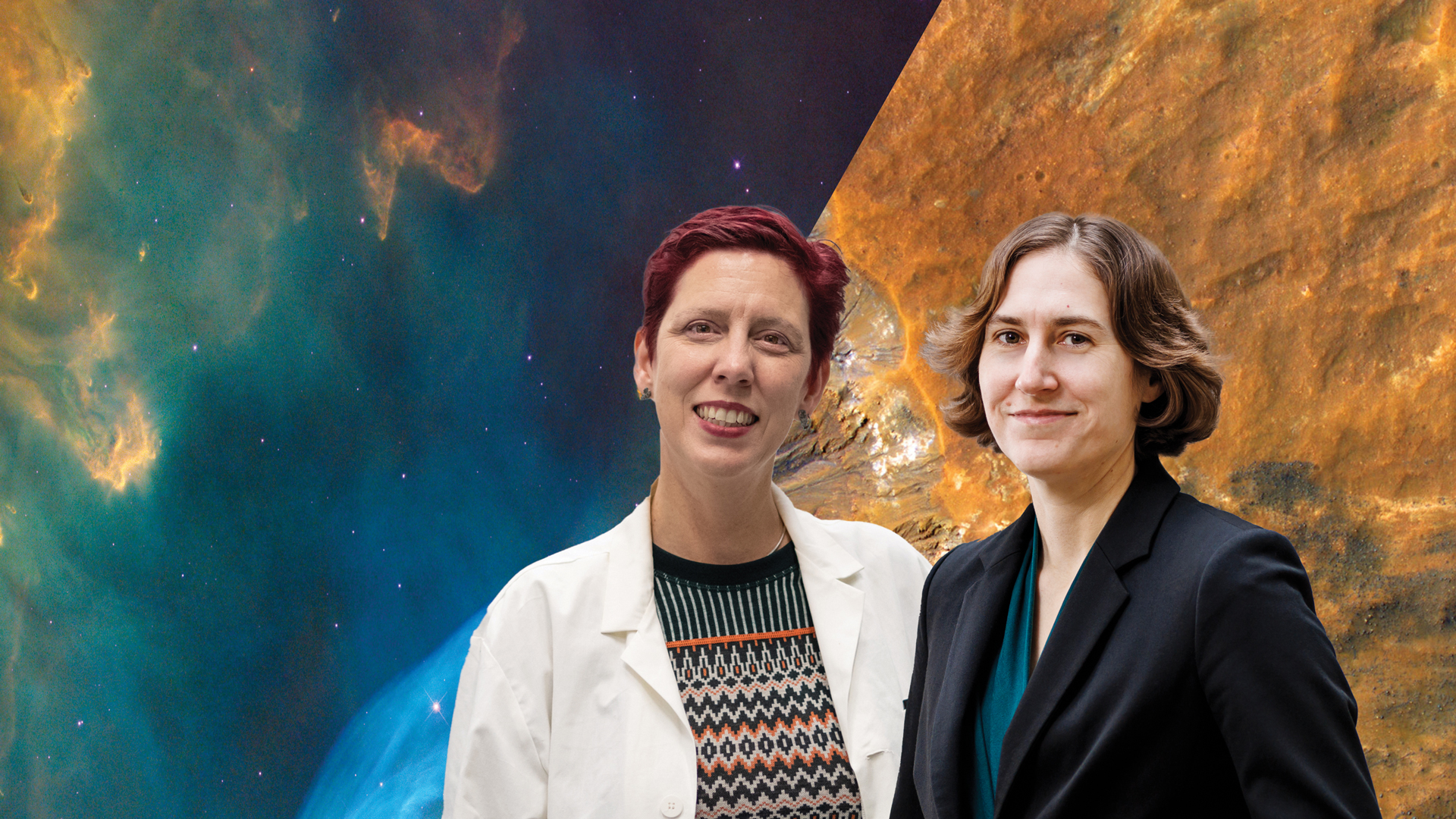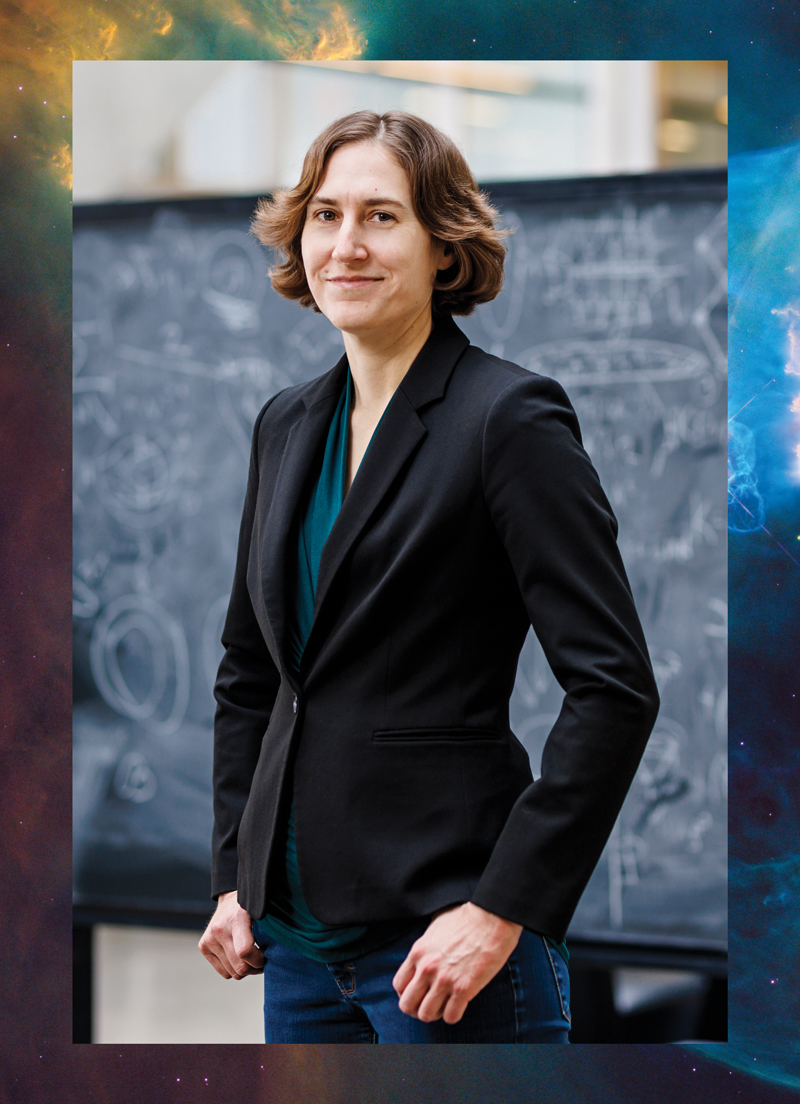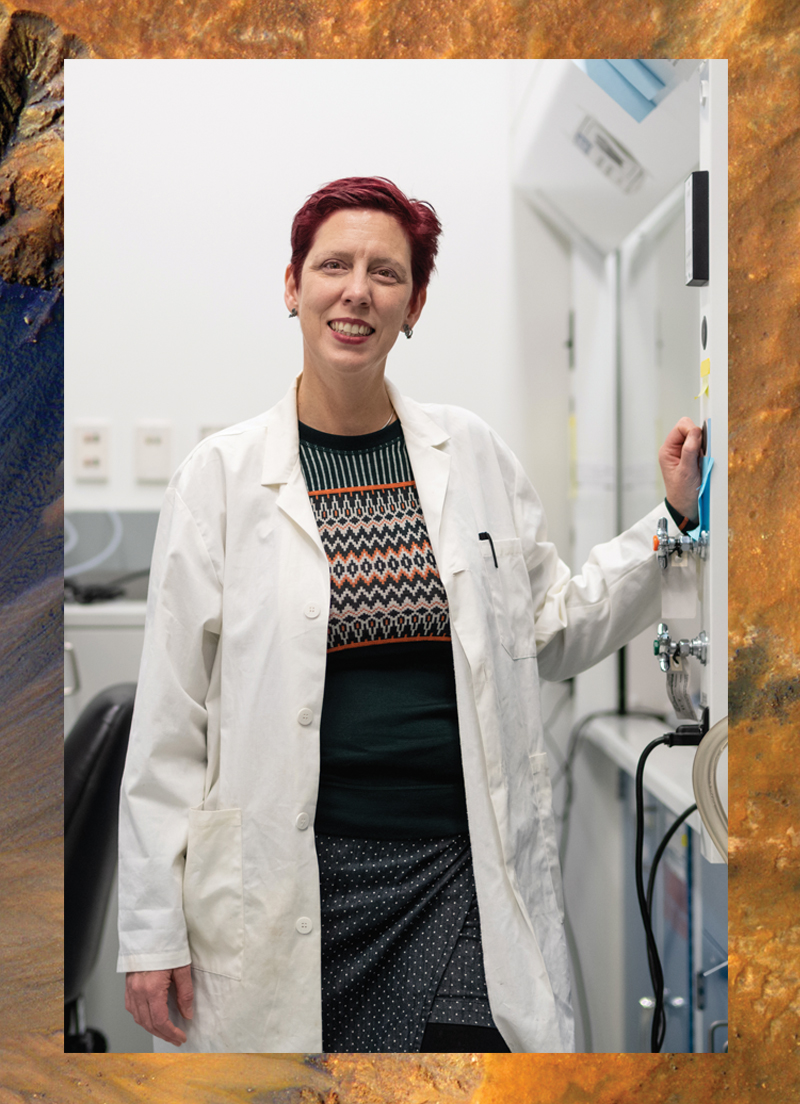By: Liz Do
6 Jun, 2023

The birth of the cosmos most likely began with a big bang 13.8 billion years ago. A hot, dense early universe rapidly expanded and inflated, creating the physical conditions for the evolution of the universe, and life on Earth.
That is how it all theoretically began — but what do researchers know of its future? Or what lives beyond Earth?
The work of CIFAR researchers in the Gravity & the Extreme Universe and Earth 4D programs, such as Katie Mack and Heather Graham, is unlocking the mysteries of Earth and Space.

The fate of the cosmos is one of humanity’s biggest existential questions.
Mack spends her time studying the early universe. It may seem counterintuitive, but it is through learn-ing how it was created that cosmologists can better understand the universe’s final act.
“What happened at the beginning is very connect-ed to our ultimate cosmic model, which is very connected to what will happen at the end,” says Mack, a CIFAR Azrieli Global Scholar in the Gravity & the Extreme Universe program, and the Hawking Chair in Cosmology and Science Communication at the Perimeter Institute.
Though the end is unknown, there are predominant scenarios, aided by physics concepts. Mack explores many of these theories in her book, The End of Everything.
One is vacuum decay, which theorizes that, due to the universe’s metastability, there is the potential consequence of its sudden decay into something new. As Mack explains, in the very early universe, there was a process by which the laws of physics underwent a bit of a rewrite.
An energy field called the Higgs field, was “switched on” after the Big Bang, and its behaviour sets the scene for how fundamental particle physics works in the universe. Once that transition occurred, it created the conditions for everything in the universe, which is all made of atoms — stars, galaxies, planets, everything. None of that could have existed before that transition.
“The tricky thing is that, based on certain interpretations of the data, like the Higgs field, our universe right now is not entirely stable,” explains Mack. “And so it could transition again to something else. And if that happened, it would rewrite the laws of physics again in such a way that atoms and molecules would no longer be able to exist. And if that happened, that would be it.”
“You can’t predict it, you can’t see it coming — the only thing we can do is look at the data. And I can say that based on our current understanding, if it could happen at all, we’re looking at something that is very unlikely to occur for the next 10 to the power of 100 years or so,” added Mack.
The most widely accepted theory, however, is the heat death theory: the idea that the universe is currently expanding and will continue to expand forever. Whatever is making the universe expand faster, is called dark energy.
“But we don’t really know what dark energy is, we just know it’s something that makes the universe expand faster,” says Mack. “As long as it’s something that’s acting in that way, the universe will continue expanding forever, speeding up and speeding up.”
As it continues to speedily expand, it means that the universe gets colder and darker as all of the matter and energy is diffused over a larger and larger region. “And that means that over time, the universe kind of fades away.”
Though theories such as these could elicit existential dread, Mack describes the work as fun, and a testament to the power of advancing the study of cosmology. “For example, with the vacuum decay theory: how do you quantify something that is a random event? What’s the probability like? How is that calculated? Well, we do it all the time in quantum physics.”
Mack also studies dark matter — the mysterious gravitational substance that makes up most of the matter in the universe — as well as black holes. On the latter, she hopes to work closely with her Gravity & the Extreme Universe program members to further investigate the topic — how they are formed, for example — which is just one of many mysteries to solve within space exploration.

While Mack explores the origins of the cosmos, Heather Graham is interested in the origins of life. In particular, she studies how to detect “weird life”: agnostic biosignatures on rocks and deep underground, that indicate life, but not life as we commonly know it.
“You and I are made of a selection of molecules that are diverse, and are intrinsically much more complex than the kind of molecules that get made abiotically — if we reach out into space and grab asteroids, which we’re doing with the OSIRIS-REx mission, or capture particles of the sun, or look at abiotic organic chemistry that happens deep in the Earth — we never see molecules above a certain kind of intrinsic complexity like we do in life,” explains Graham, a fellow in the Earth 4D program and a researcher at the NASA Goddard Space Flight Center.
That intrinsic complexity leads to different chemical reactions, including metabolism, representing the signature of evolution.
“What we’re looking at is chemistries that have been optimized through evolution and represent intrinsic complexity that isn’t observed and would be highly unlikely. We’re not saying it couldn’t happen. But it’s highly improbable to happen in kinetic systems where you’re just waiting for heat and pressure and time to make special molecules,” explains Graham.
Establishing tools and techniques to identify life not-of-this-Earth is becoming more important as space exploration accelerates. Graham’s research could help to truthfully determine alien life beyond Earth.
“I think something that’s become really evident as the pace of exploration has increased, is how much better we need to be thinking about what the expressions of life are, and how we constrain our observations,” says Graham.
Graham’s work also illuminates possible novel life deep in the Earth, where potential ecosystems have been out of communication with the surface for billions of years.
“I’m really interested in what is fundamentally differ-ent about life. How did it arise? Why is it an inevitable process? It’s pretty easy to start making things look like cells in the lab that start doing kind of basic metabolism. So is it an inevitable process?” says Graham.
“I think I’m really driven to understand the history of life. I came to astrobiology, not because of some innate curiosity about other planets, but because I’m very interested in the history of life on Earth,” she adds.
Graham’s work is highly collaborative, especially within the Earth 4D program, where members are particularly active and incredibly engaged with each other’s research. She is currently collaborating with program peer and CIFAR Azrieli Global Scholar, Jacqueline Goordial to examine microbial life within extreme subsurfaces, such as permafrost. As well, she is working with Barbara Sherwood Lollar, program co-director. “We use test materials that she brings to us from the deep mines of Ontario.”
Ultimately, Graham hopes to see “weird” life detection and experiments done on other planets as well.
“I want to see some real experiments happen. A lot of space exploration is going and observing, and seeing what’s out there. And all of that is great, but I would like us to try catalysis experiments on another planet to see if there’s evidence of energy transfer that we wouldn’t expect,” said Graham. “I think it would be fabulous to start interrogating some of the waters of the ocean worlds with these methods that we’re developing. I’m also really excited for the continued investment in bringing Extra Terrestrial materials back to Earth.”
CIFAR is a registered charitable organization supported by the governments of Canada and Quebec, as well as foundations, individuals, corporations and Canadian and international partner organizations.